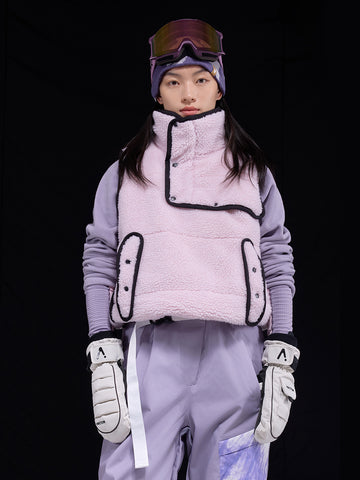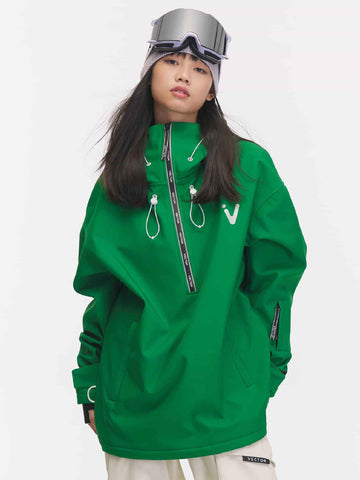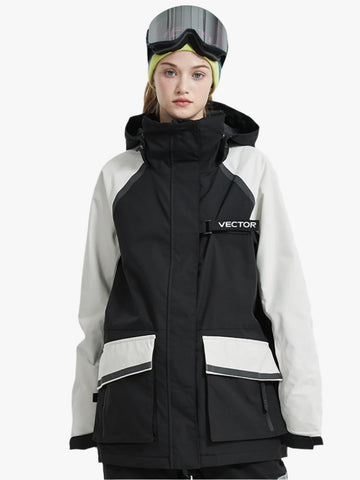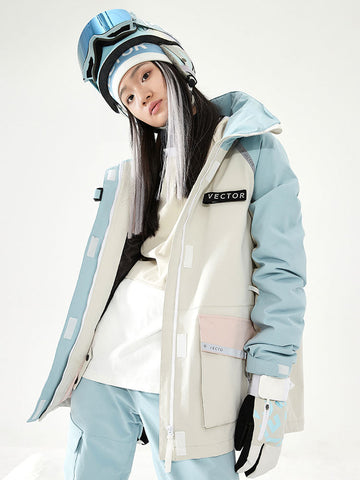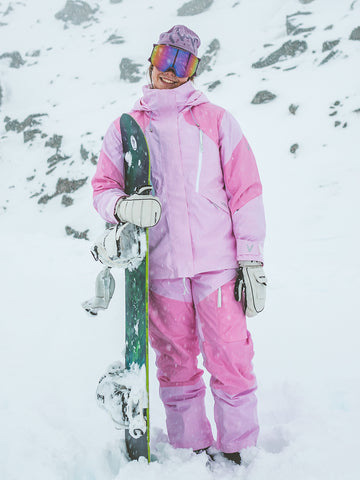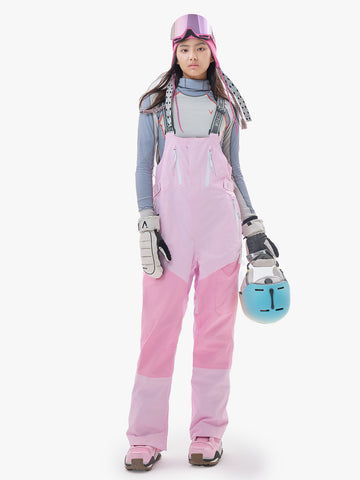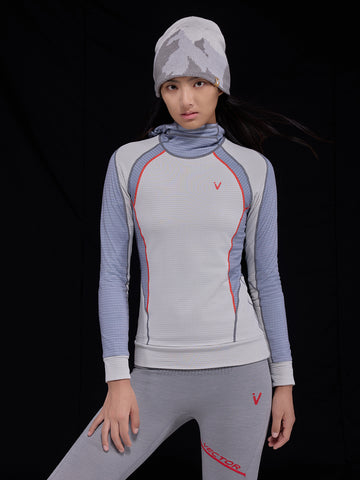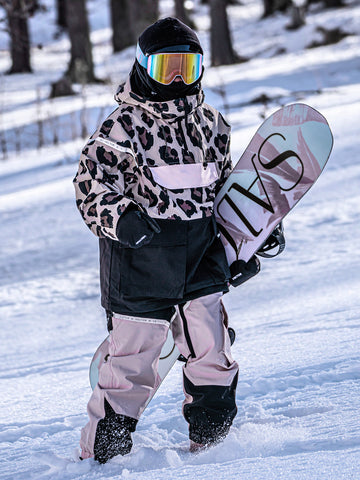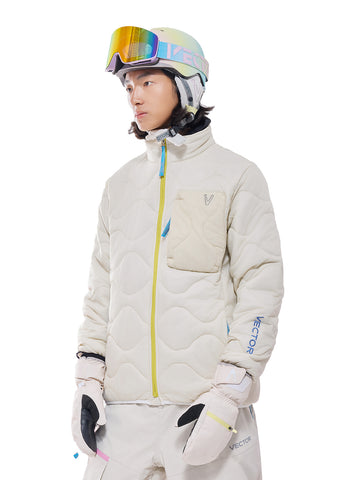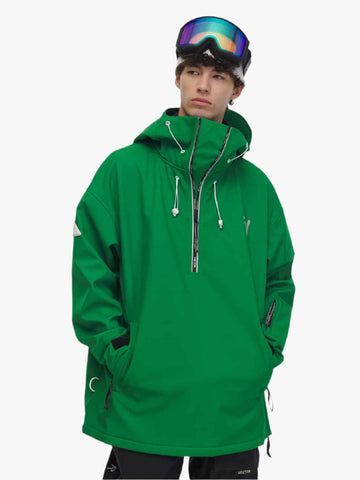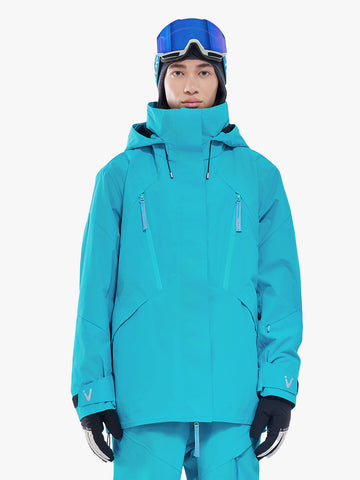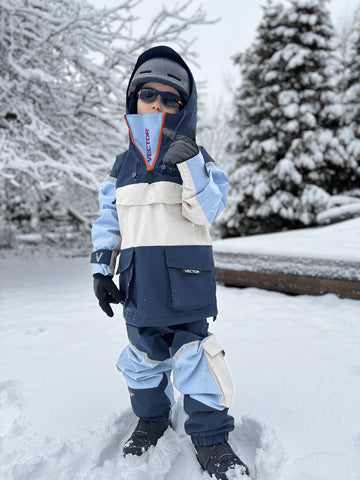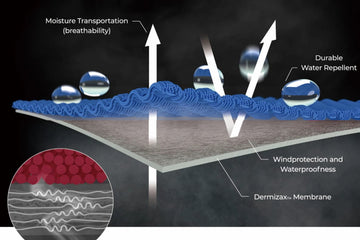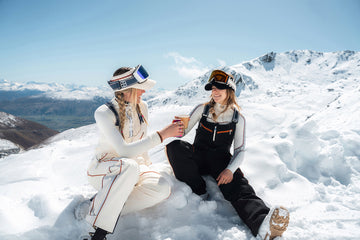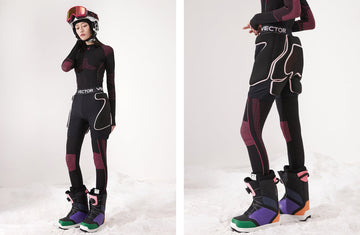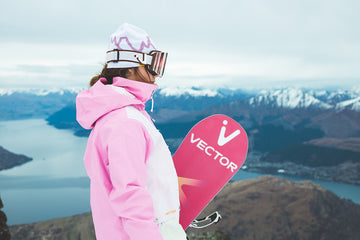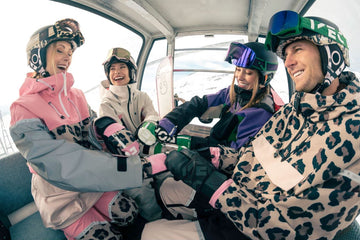When it comes to skiing, having the right gear is crucial for both comfort and performance. Snow pants and snow jackets are also essential. Leopard print snow pants are one of the must - have items in a skier's wardrobe. However, what you wear underneath these snow pants is equally important. The right undergarments can make a huge difference between enjoying a comfortable day of skiing and having a day filled with discomfort and distraction. In this article, we'll delve into the various factors to consider when choosing what to wear under your ski pants, from fabric types to layering strategies, to ensure you have the perfect setup for your next skiing adventure.
Contents
Understanding the Importance of Base Layers
Considering the Climate and Weather Conditions
Layering Strategies for Optimal Comfort and Performance
Don't Forget About Socks and Underwear
Conclusion
Understanding the Importance of Base Layers

Base layers are the foundation of your skiing attire. They are designed to wick moisture away from your skin, keeping you dry and comfortable throughout the day. When you're skiing, your body generates a lot of heat and sweat, especially during high-intensity runs or when you're working on your technique. If that moisture is allowed to sit against your skin, it can quickly become cold and clammy, leading to discomfort and even an increased risk of hypothermia.
There are several key characteristics to look for in a good base layer. Firstly, it should be made from a moisture-wicking fabric. Synthetic materials like polyester and nylon are excellent choices, as they are designed to pull sweat away from your skin and disperse it across the surface of the fabric, where it can evaporate more easily. Merino wool is another popular option for base layers. It has natural moisture-wicking properties and is also odor-resistant, which is a huge plus during multi-day ski trips. Additionally, merino wool retains its insulating properties even when wet, making it a reliable choice for varying weather conditions.
The fit of your base layer is also important. It should be snug but not restrictive. A tight fit ensures that the fabric is in close contact with your skin, allowing it to effectively wick away moisture. However, you don't want it to be so tight that it restricts your movement or circulation. Look for base layers that are designed specifically for skiing or other athletic activities, as they will often have features like flatlock seams to prevent chafing and gussets for increased mobility.
Considering the Climate and Weather Conditions
The type of undergarments you wear under your ski pants will largely depend on the climate and weather conditions you'll be facing on the slopes. In colder conditions, you'll want to prioritize warmth and insulation. Thermal base layers are a great option in this case. They are typically made from thicker, more insulating fabrics that can trap heat close to your body. Look for thermal base layers with a high loft, as this will provide better insulation. Some thermal base layers also have additional features like windproof panels or reinforced areas in the seat and knees to provide extra protection and durability.
On the other hand, if you're skiing in milder conditions or if you tend to run hot, you may want to opt for a lighter, more breathable base layer. These are often made from thinner, more lightweight fabrics that still wick moisture effectively but don't provide as much insulation. They are perfect for spring skiing or for those days when the sun is shining and the temperatures are relatively warm. Some breathable base layers also have mesh panels or other ventilation features to help keep you cool and comfortable.
It's also important to consider the possibility of changing weather conditions throughout the day. Ski resorts can experience a wide range of temperatures and weather patterns, from bright sunshine to sudden snowstorms. Having a versatile base layer that can adapt to these changing conditions is key. Look for base layers that are designed to be worn in a variety of temperatures, with features like zippered vents or adjustable cuffs to help you regulate your body temperature as needed.
Layering Strategies for Optimal Comfort and Performance

Layering is a crucial concept in skiing attire, and it applies not only to your outerwear like snow pants and jackets but also to your undergarments. By wearing multiple layers, you can create a system that works together to keep you warm, dry, and comfortable. The base layer, as we've already discussed, is the first layer that goes against your skin. On top of that, you can add a mid-layer for extra insulation if needed.
Mid-layers can be made from a variety of materials, including fleece, down, or synthetic insulation. Fleece is a popular choice for mid-layers because it is lightweight, breathable, and provides good insulation. It also dries quickly, which is important in case you get caught in a sudden snowstorm or if you're sweating a lot. Down mid-layers are known for their excellent warmth-to-weight ratio, making them a great choice for cold-weather skiing. However, down does lose its insulating properties when it gets wet, so it's important to keep it dry. Synthetic insulation mid-layers are a good alternative to down, as they maintain their insulation even when wet and are often more durable.
When it comes to layering under your ski pants, you can experiment with different combinations to find what works best for you. Some skiers prefer to wear a base layer and a mid-layer, while others may only need a base layer on warmer days. It's also important to consider the fit of your layers together. You want to make sure that they don't bunch up or restrict your movement when you're wearing your snow pants. Look for layers that are designed to be worn together, with features like articulated cuts and stretchy fabrics to allow for a full range of motion.
Don't Forget About Socks and Underwear
While base layers are the primary focus when it comes to what to wear under ski pants, your socks and underwear also play a role in your overall comfort and performance on the slopes. When it comes to socks, you want to choose a pair that is specifically designed for skiing. Ski socks are typically made from moisture-wicking materials and have extra cushioning in key areas like the heel and ball of the foot to provide comfort and support. They also have a snug fit to prevent blisters and ensure a proper fit in your ski boots.
As for underwear, it's important to choose a pair that is comfortable and moisture-wicking. Avoid cotton underwear, as it can become damp and cold, leading to discomfort. Instead, opt for underwear made from synthetic materials or merino wool. Some underwear is also designed specifically for skiing or other athletic activities, with features like flat seams to prevent chafing and a contoured fit for added comfort.
Conclusion
In conclusion, what you wear under your ski pants is just as important as your snow pants and snow jackets. By choosing the right base layers, considering the climate and weather conditions, employing effective layering strategies, and not forgetting about socks and underwear, you can ensure that you stay comfortable, dry, and warm throughout your skiing adventure. Remember, the key is to find a combination of undergarments that works best for you and your individual needs. So, take the time to experiment with different options and find the perfect setup for your next day on the slopes. Happy skiing!
FAQ
Q: Is it better to have long pants or short pants when skiing?
A: It's recommended to choose long - pants base layers. They can fit against the body more comprehensively to wick away moisture, keep the body dry, reduce heat loss, and make you more comfortable while skiing. Besides, they can prevent snow boots from breaking the skin of the lower leg
Q: How can I avoid my underwear getting soaked during skiing because I tend to sweat a lot?
A: You can choose underwear with good breathability and moisture - wicking properties, such as nylon or merino wool, and appropriately reduce the thickness of the mid - layer to facilitate the dissipation of heat and moisture. At the same time, pay attention to adjusting the ventilation of your skiing gear in a timely manner.
Q: Can I temporarily wear old cotton underwear as skiing underwear?
A: It's not advisable. Cotton underwear has strong water - absorbing properties. Once it gets wet, it dries slowly and has poor insulation, which can make the body feel cold and wet, increasing the risk of catching a cold. It's best to wear specialized skiing underwear.
REFERENCE



